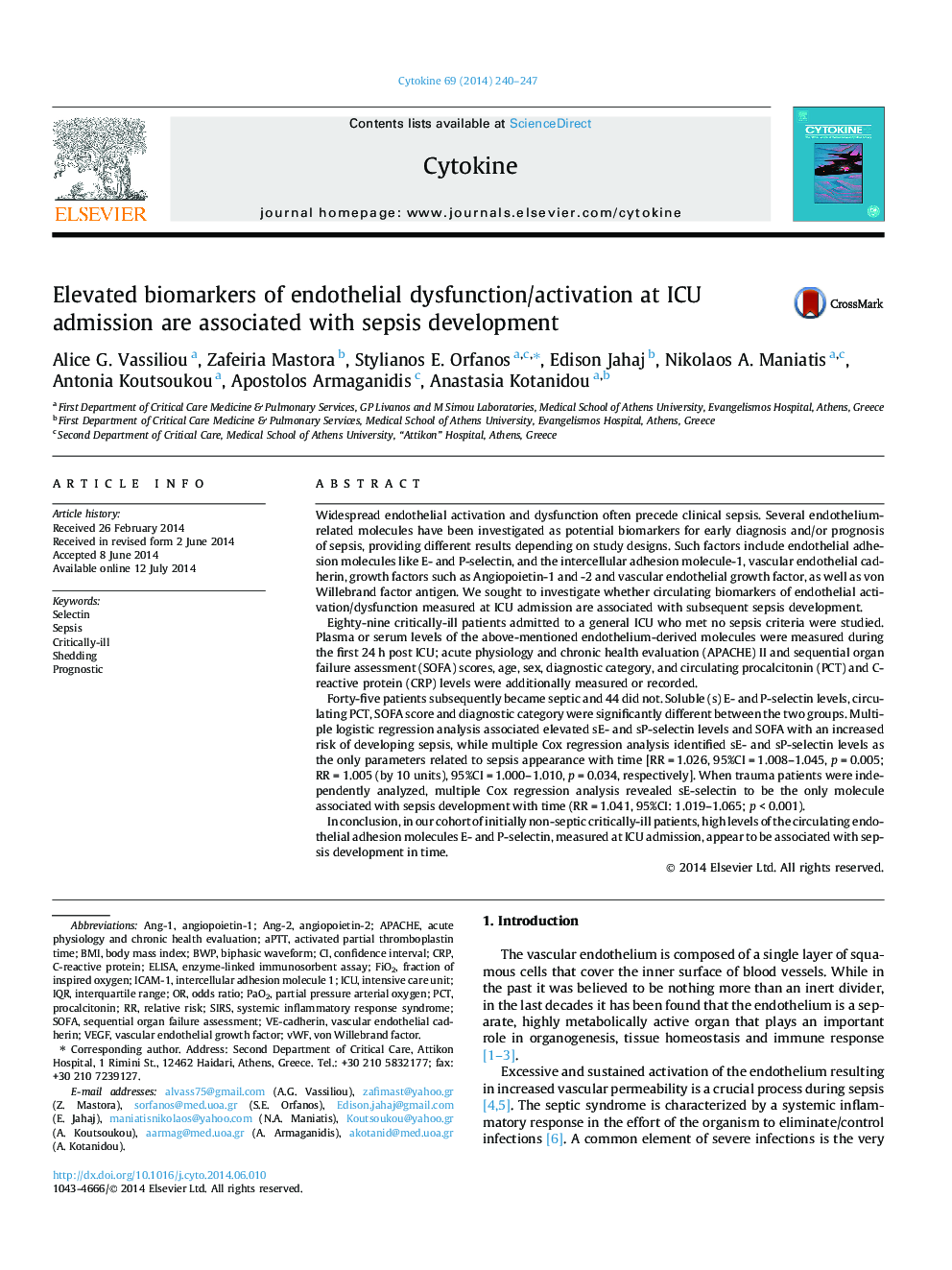| کد مقاله | کد نشریه | سال انتشار | مقاله انگلیسی | نسخه تمام متن |
|---|---|---|---|---|
| 2794232 | 1155256 | 2014 | 8 صفحه PDF | دانلود رایگان |

• The role of endothelial biomarkers in the timely diagnosis of sepsis was evaluated.
• Circulating E- and P-selectin at ICU admission are related to sepsis development.
• We sought means to detect sepsis before it is clinically manifested.
Widespread endothelial activation and dysfunction often precede clinical sepsis. Several endothelium-related molecules have been investigated as potential biomarkers for early diagnosis and/or prognosis of sepsis, providing different results depending on study designs. Such factors include endothelial adhesion molecules like E- and P-selectin, and the intercellular adhesion molecule-1, vascular endothelial cadherin, growth factors such as Angiopoietin-1 and -2 and vascular endothelial growth factor, as well as von Willebrand factor antigen. We sought to investigate whether circulating biomarkers of endothelial activation/dysfunction measured at ICU admission are associated with subsequent sepsis development.Eighty-nine critically-ill patients admitted to a general ICU who met no sepsis criteria were studied. Plasma or serum levels of the above-mentioned endothelium-derived molecules were measured during the first 24 h post ICU; acute physiology and chronic health evaluation (APACHE) II and sequential organ failure assessment (SOFA) scores, age, sex, diagnostic category, and circulating procalcitonin (PCT) and C-reactive protein (CRP) levels were additionally measured or recorded.Forty-five patients subsequently became septic and 44 did not. Soluble (s) E- and P-selectin levels, circulating PCT, SOFA score and diagnostic category were significantly different between the two groups. Multiple logistic regression analysis associated elevated sE- and sP-selectin levels and SOFA with an increased risk of developing sepsis, while multiple Cox regression analysis identified sE- and sP-selectin levels as the only parameters related to sepsis appearance with time [RR = 1.026, 95%CI = 1.008–1.045, p = 0.005; RR = 1.005 (by 10 units), 95%CI = 1.000–1.010, p = 0.034, respectively]. When trauma patients were independently analyzed, multiple Cox regression analysis revealed sE-selectin to be the only molecule associated with sepsis development with time (RR = 1.041, 95%CI: 1.019–1.065; p < 0.001).In conclusion, in our cohort of initially non-septic critically-ill patients, high levels of the circulating endothelial adhesion molecules E- and P-selectin, measured at ICU admission, appear to be associated with sepsis development in time.
Journal: Cytokine - Volume 69, Issue 2, October 2014, Pages 240–247